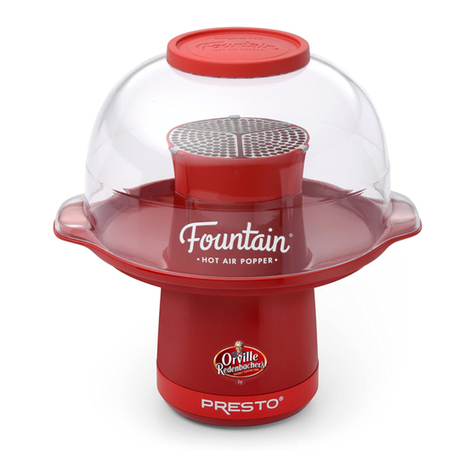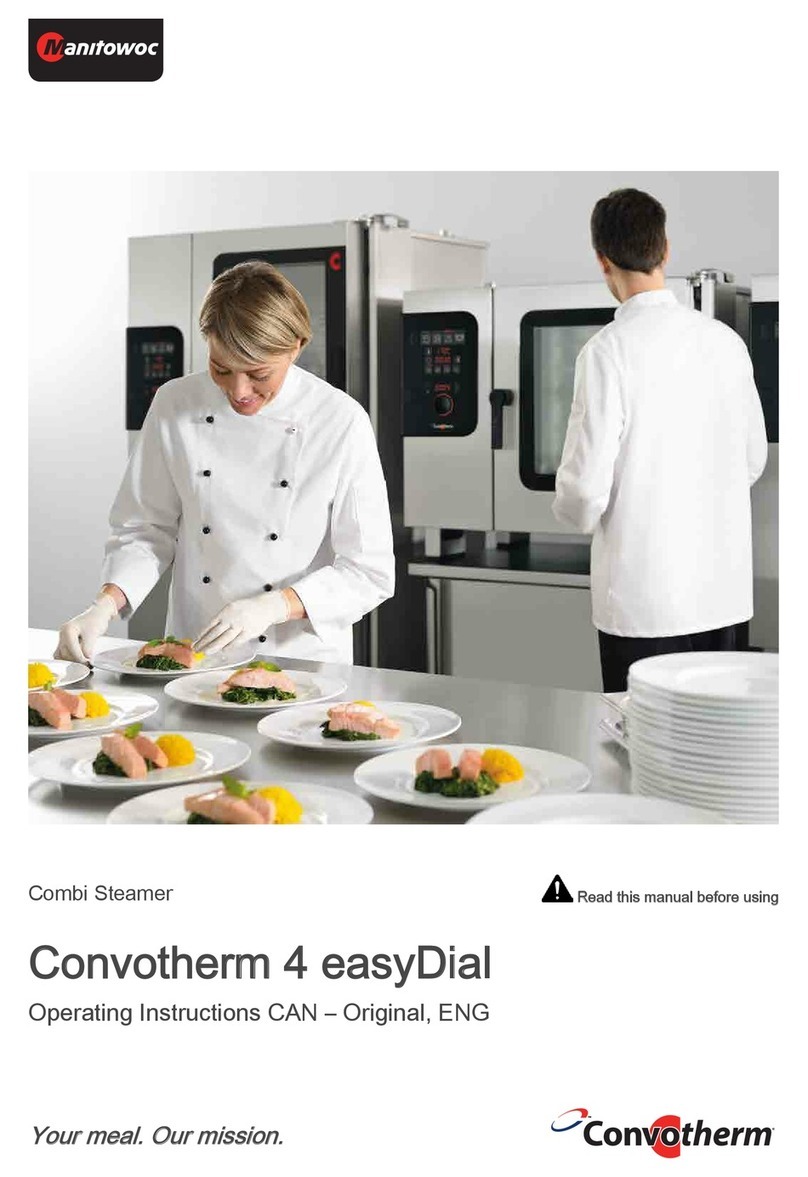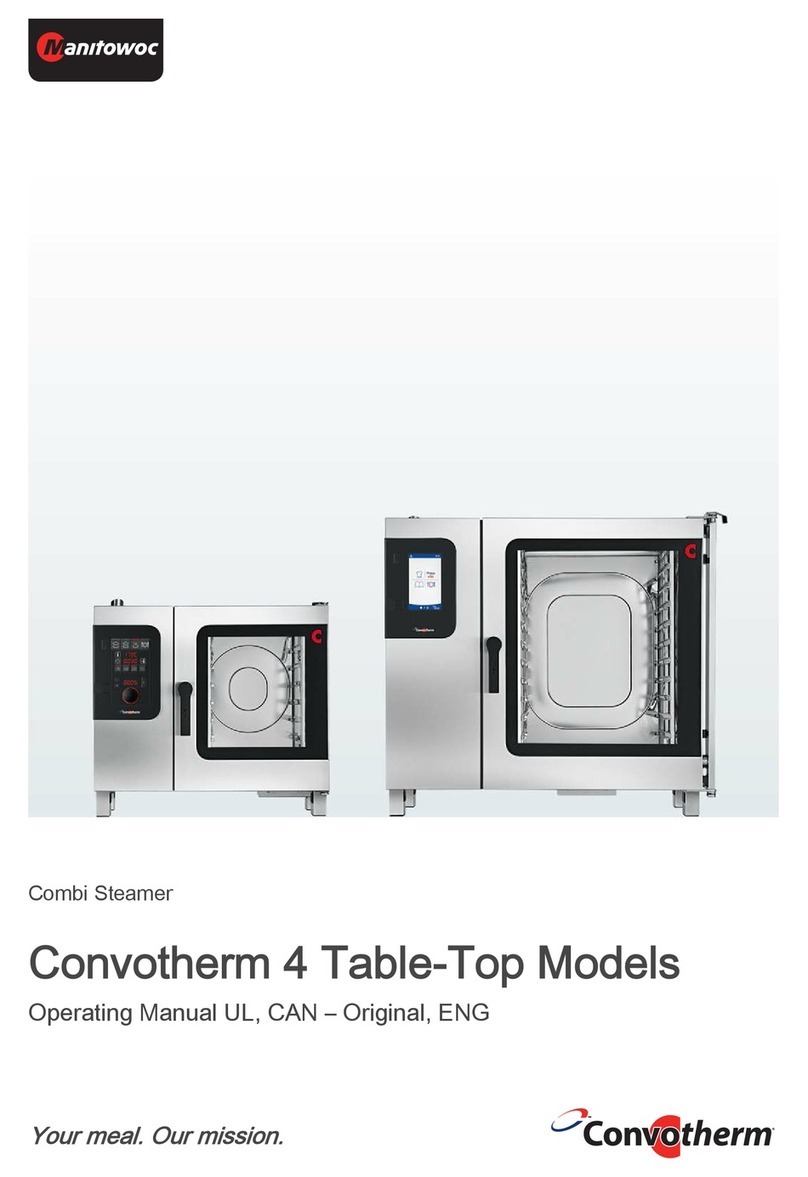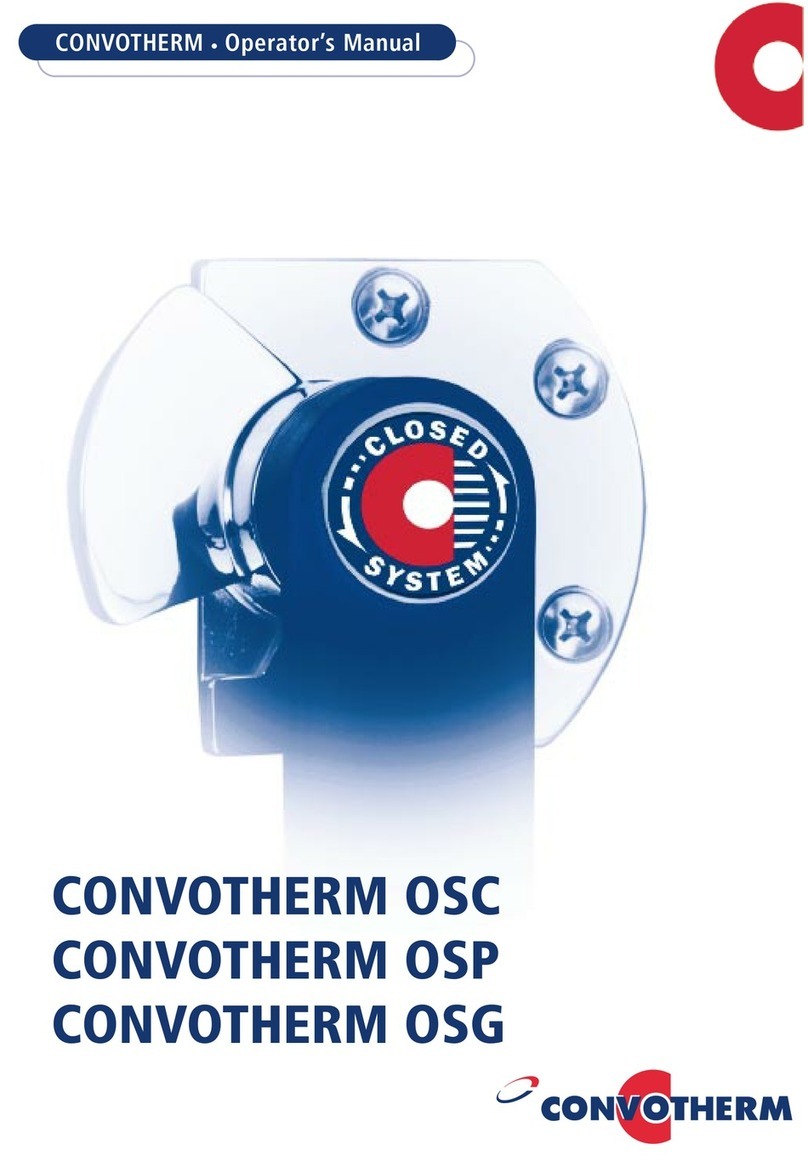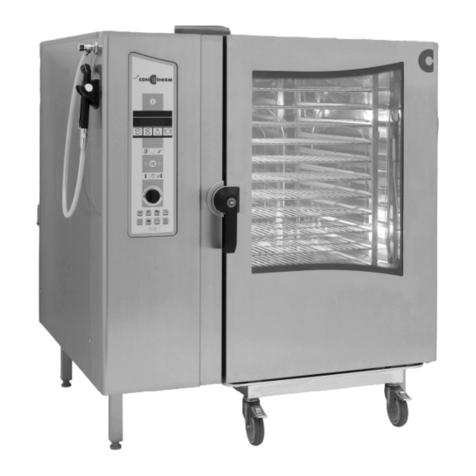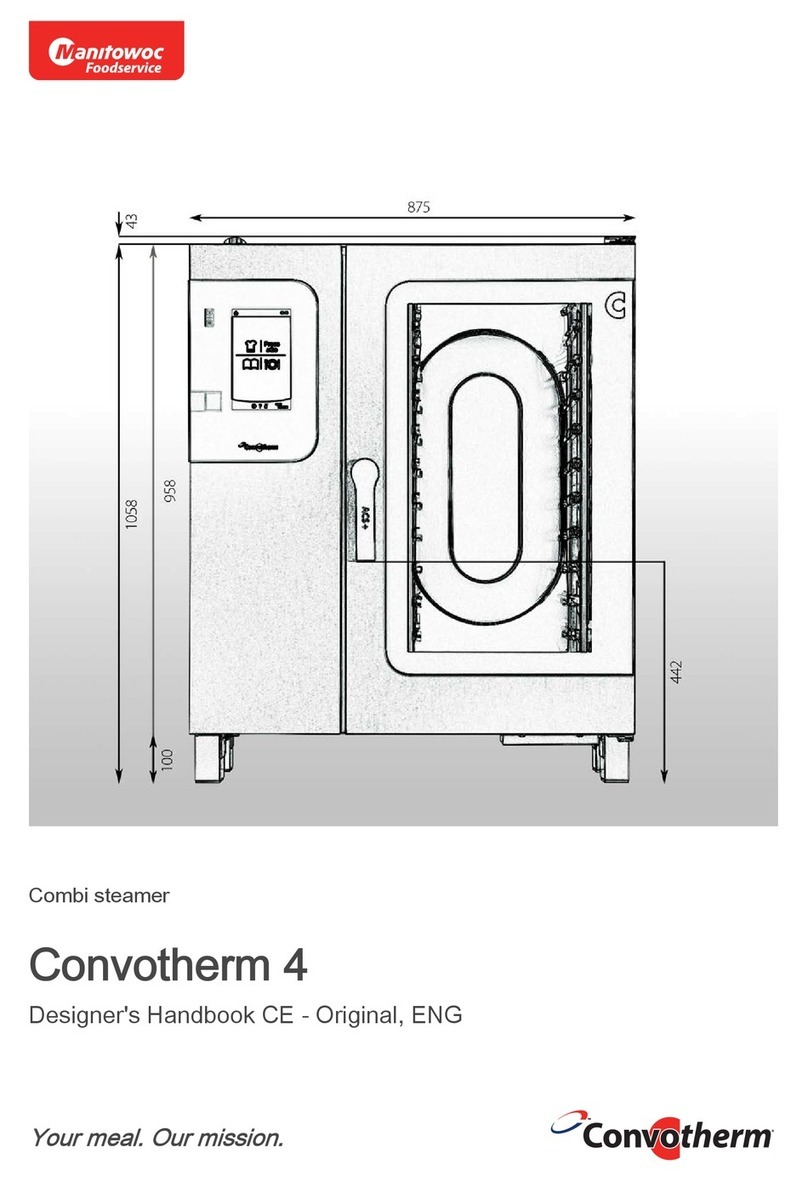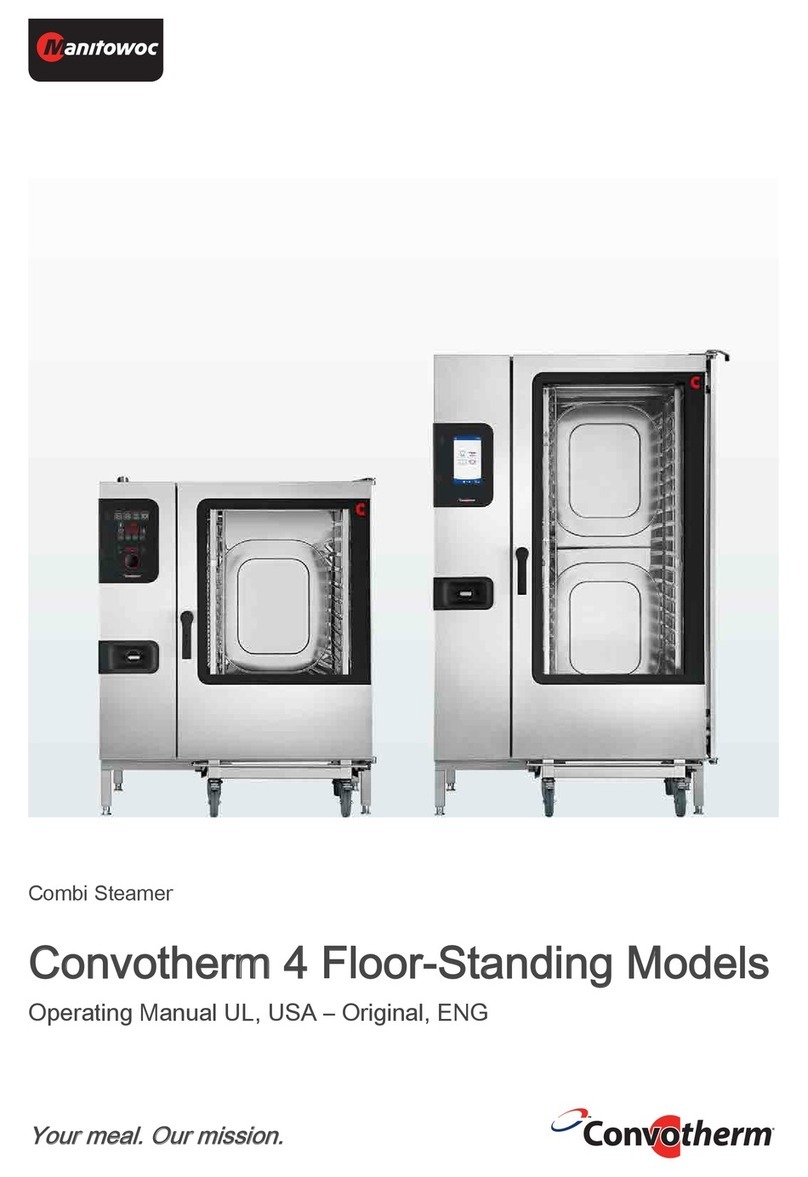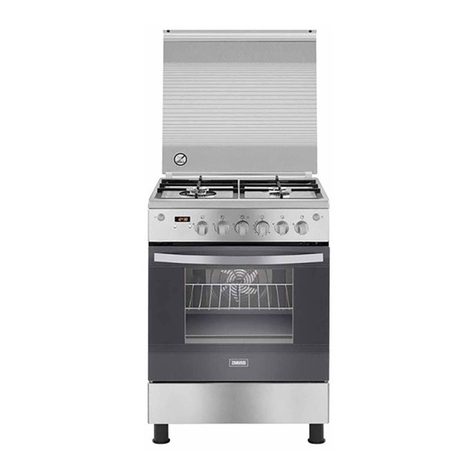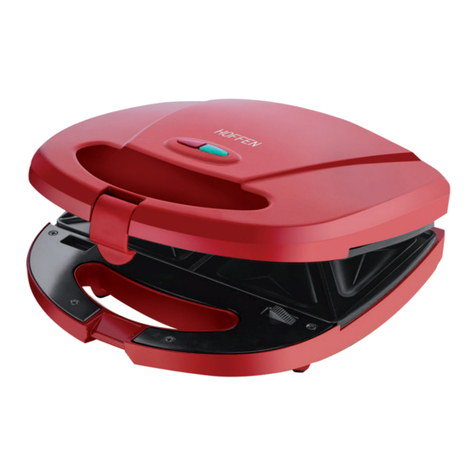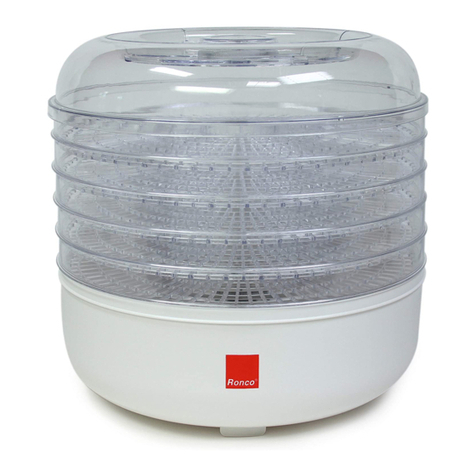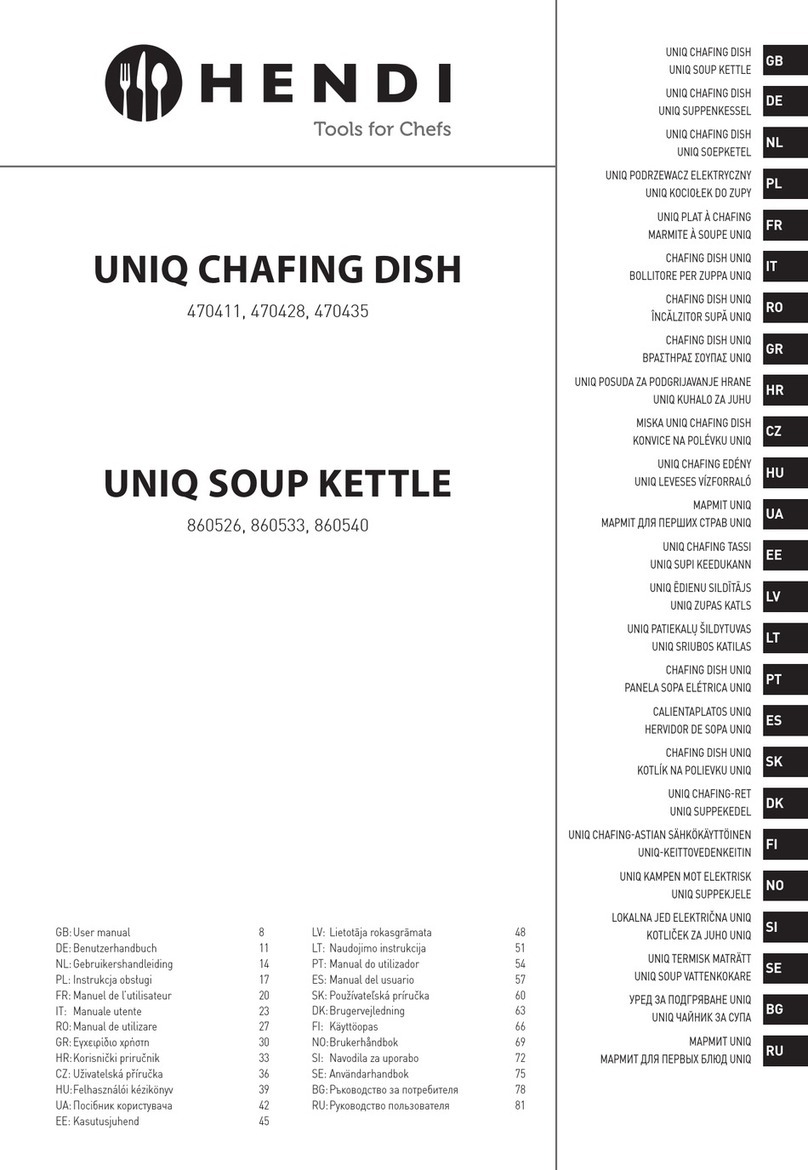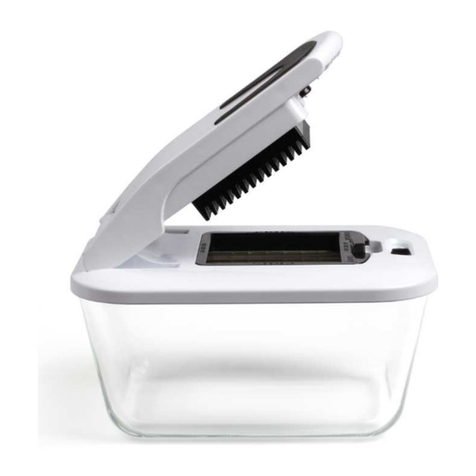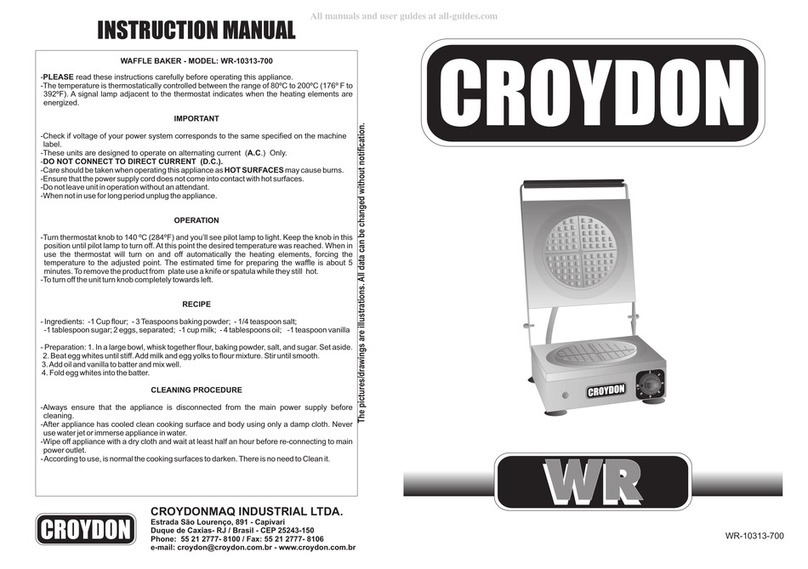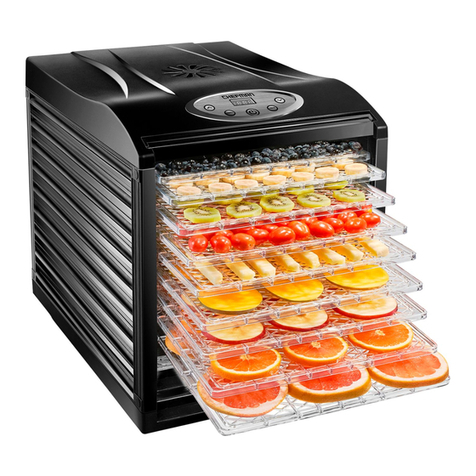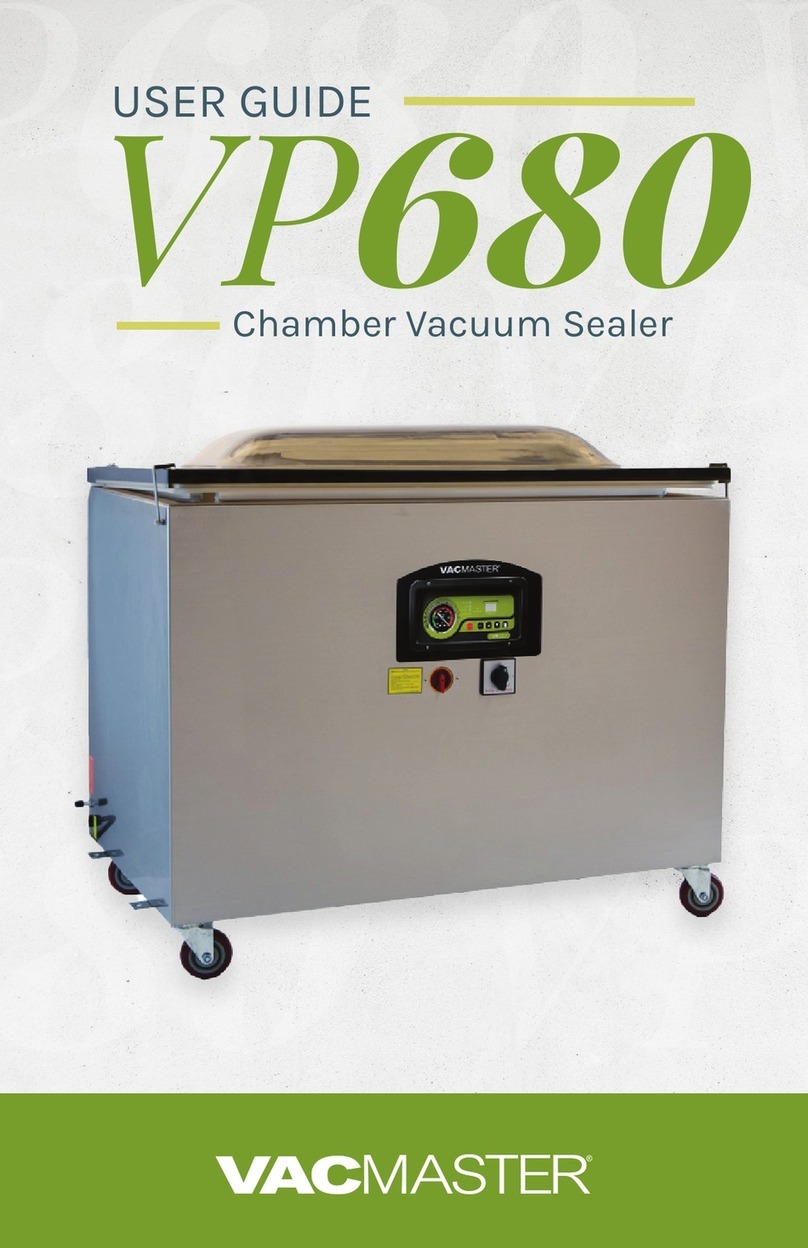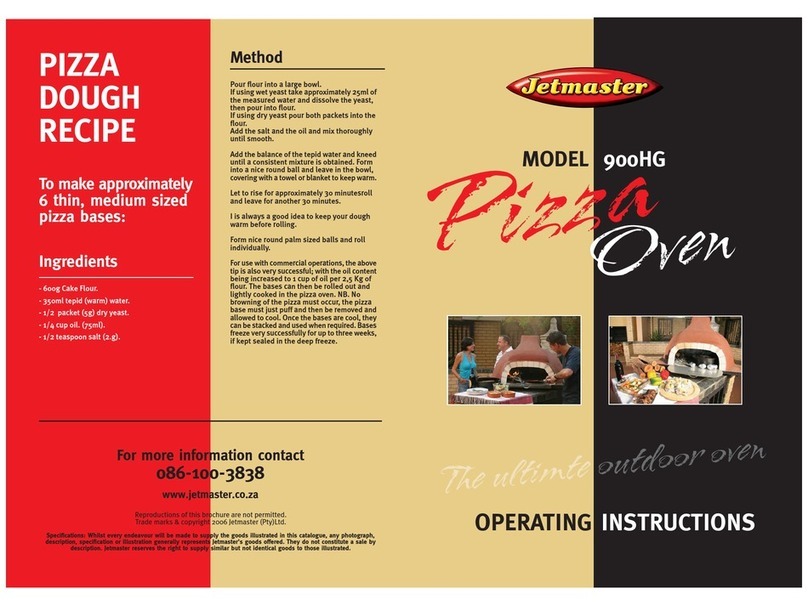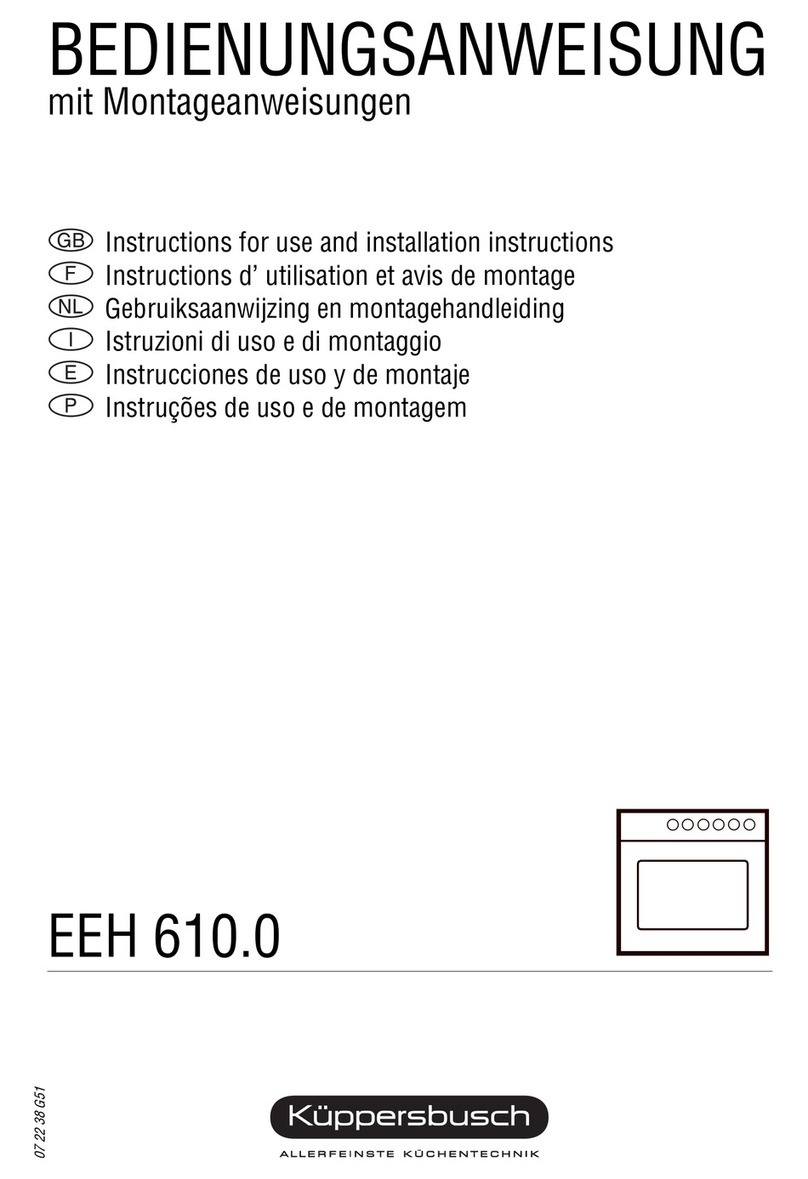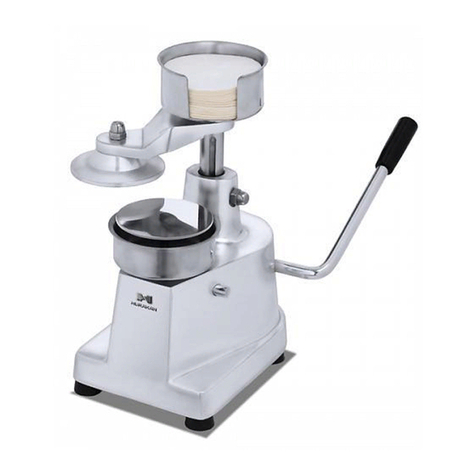2.3 Additional Hazards and Safety Measures During Transport and
Setup
Transportation and setup
When transporting and setting up the combi oven, keep the following hazards in mind and take the
actions required in order to eliminate and/or minimize these hazards:
Risk / hazard Where and in which situations will
the risk/hazard exist?
What to do / safety equipment
Explosion hazard
posed by gas leaks
Whenever the connections are not
disconnected before moving the unit
Make sure to only have gas techni‐
cians from an authorized installation
company work on the gas system
Disconnect the connections
Safety device:
■Wall anchoring kit
Risk of electric shock
posed by live parts
Whenever replacing the bottom
unit’s dry air intake
■Work on the unit’s electrical com‐
ponents should be performed ex‐
clusively by a qualified electrician
from an authorized service compa‐
ny
■Work professionally
Before removing the covers:
■De-energize all connections
■Lock out and tag out all switches
■Make sure that the unit is de-ener‐
gized
Crush hazard if the unit
topples over
■Whenever moving the units across
uneven surfaces or after bumping
into an obstacle
■Whenever the connections are not
disconnected before lifting
■Whenever the unit is not posi‐
tioned correctly
■Whenever the supporting surface
is not stable and even
■Secure the units so that they can‐
not topple over
■Use suitable equipment and as‐
sembly aids to transport the units
■Set up the units on an even and
stable supporting surface
■Disconnect the connections
■Place the unit on the locating pins
correctly and screw it in place
Safety device:
■Wall anchoring kit (optional)
■Locating pins and screw joints
■Marine model: Feet that can be
screwed onto the floor
■Whenever the top unit is loaded
with a lot of weight
■When moving the stacking kit
■When placing the unit on its back
Exercise caution when performing
maintenance work
Risk of injury due to ex‐
cessive exertion
■When stacking the stacking kit and
the unit
■Whenever using a spirit level to
level the units
■Whenever mounting the center
adapter
■When placing the unit on its back
and then lifting it back up
■Do not lift or carry too much
weight!
■Only with a sufficient number of
people or suitable equipment
Risk of scalding posed
by hot liquid
■When lifting the unit
■When placing the unit on its back
■Let the unit cool down before mak‐
ing changes
■Wear the required personal pro‐
tective equipment
2 For Your Safety
9




